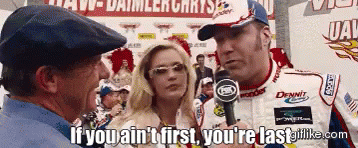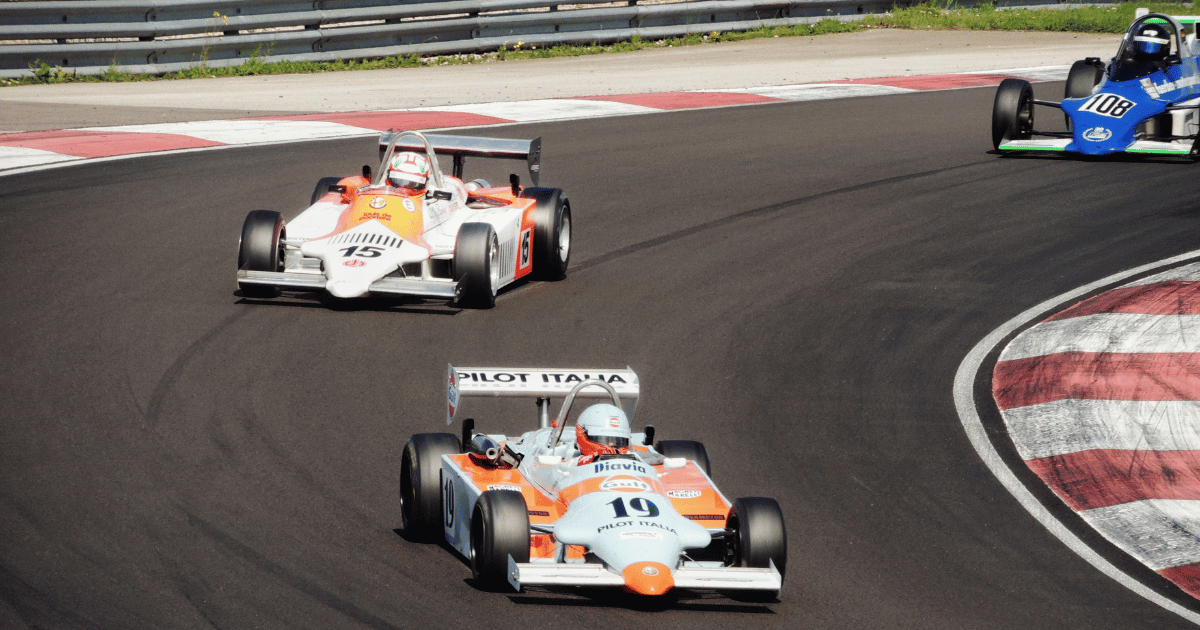This article is based on Justin’s brilliant talk at the Product Marketing Festival in 2021. He’s since taken on a new challenge as Senior Lead for Competitive Intelligence at Salesforce. Congratulations, Justin!
When I joined Highspot two and a half years ago, competitive intelligence (CI) was only supposed to occupy about a third of my time. I focused on things like launches and messaging and positioning, pretty much only dabbling in CI in my spare time.
But, as Henry Ford once said, “Auto racing began five minutes after the second car was built,” and we quickly found ourselves in a much more competitive race. In 2018, we were racing against 15 other drivers. Two years later, that figure was 189! The growth of our space (sales enablement) was exponential. The category became a must-have, and billions of dollars in funding flowed in.
But it wasn’t just the explosion in competition that made CI challenging. When I arrived, our battlecards hadn’t been updated in 6 months. Plus, sales owned our win/loss program and I had at least 10 sellers a day asking me for help landing deals.
Our whole approach to CI was ad hoc and reactive. Intel was scattered in PDFs and decks were all over the place. We had no defined objectives, measurable KPIs, or executive visibility. And, as we gained competitors, our win rates were becoming increasingly volatile. This wasn't sustainable for my sanity or the business!
As Ricky Bobby says, "If you ain’t first, you’re last." We wanted to win the race, so it was time to switch to a more programmatic way of thinking about competitive enablement.

How we leveled up our competitive enablement program
I want to discuss where things are today, what the journey looked like, and the triggers that caused us to up our game. I'll tell this story via two notorious Formula 1 rivalries to illustrate how competitors catalyze your graduation across competitive enablement maturity stages – from go-karts to weekend racing to club racing to F2, and finally F1.
From go-karts to weekend racing, aka from ad hoc to adopting
We graduated from go-karts to weekend racing by taking a few key steps:
- We made our first attempt at centralizing our competitive intel.
- We made sure to keep the content fresh.
- We produced sales-oriented content and static battlecards to use against competitors.
- We started tracking our win rates and increased the general awareness of what they looked like.
However, we still didn’t have much executive visibility.
From weekend racing to club racing, aka from adopting to impacting
Innovation and improvement are often prompted by competitors, which leads to our first story – one that mirrors the rivalry that took us from weekend to club racing.
Let me introduce our two racers. Senna was one of the best drivers ever. Prost was a crafty fox of a driver with connections in the FIA (the governing body of motorsport) and had an unfortunate habit of cheating.
At Highspot, we found ourselves facing a competitor like Prost – a real thorn in our side. They fought dirty, tried to sabotage our car, and trash-talked us to the race officials. Their tactics destabilized our win rates. In some laps, we were ahead; in other laps, we were suddenly behind.
Now, racing is tough, but there’s a popular saying in the world of Formula 1: “Rain is the great equalizer.” That’s because when it rains, drivers’ skill is what shines through – not politics or mind games. Senna was great at racing in the rain, and so were we.
Although we had a tough year against this competitor, it rained a lot and as such, our skill shone through. We maintained our competitive win rates, even stealing customers away from that pesky competitor.
We achieved all this through these key steps:
- We centralized our intel (properly this time!).
- We enabled all revenue teams – not just salespeople.
- We created dynamic battlecards with insights and plays.
- We tracked the impact of our content on win rates.
Thanks to all this, we started earning executive visibility and support.
From club racing to F2, aka from impacting to influencing
Once we entered the impacting club racing stage, we met another driver who forced us to innovate again. This brings us to the tale of Lauda and Hunt.
Lauda was methodical and calculated – an excellent driver. Hunt was a party boy who suddenly came into money and started racing with no method whatsoever. Plus, frankly, he had a rather abrasive way about him.
In the 1976 German Grand Prix, Lauda was the defending champ, on track to beat Hunt again. But halfway through, Lauda's car hit a wet patch and slammed into a wall at over 100 mph. The car burst into flames.
Lauda spent 33 days in the hospital with third-degree burns over 90% of his body. He narrowly escaped death. Then, just six weeks later, he raced in the Italian Grand Prix and finished the season, losing the championship to Hunt by just one point.
This is a story about resilience, which is a key trait, especially in the later stages of the Competitive Enablement Maturity Model.
You likely have competitors like Hunt. They may have weaker products, but they mask them with flashy exteriors. You have the better offering in terms of your product, service, customer satisfaction, and ROI, but it's tough battling these flashy competitors. One lap you pull ahead; the next you fall behind. Only resilience keeps you going. We had a competitor like that too.
We beat our own Hunt by making investments that graduated us to the next stage of the Competitive Enablement Maturity Model, the influencing stage, aka Formula 2 – getting even closer to Formula 1. More specifically:
- We strategically informed product, executives, and other go-to-market teams, who now made decisions based on our intel.
- We systematically produced more role-specific content – additional battlecards, responses to competitor announcements, sales plays, and more.
- We worked towards revenue attribution, building dashboards with leading indicators like competitor presence and lagging indicators like win/loss rates by competitor, industry, and reason.
Through all this, we earned executive trust, which accelerated us even further.
From F1 to F2, aka influencing to transforming
The race doesn’t end here. There's a final stage we're striving for: The transformation stage. To quote the legendary Ayrton Senna, "If you no longer go for a gap that exists, you're no longer a racing driver."
In Formula 1, going for those gaps means whittling down your pit stop times. The average F1 pit stop takes just 2.4 seconds – which is incredible! Imagine changing four tires in under three seconds! It takes a lot of skill, and it’s not something you’ll do if you’re still racing go-karts. Fun fact: The fastest-ever pit stop was Max Verstappen with Red Bull at 1.82 seconds – 25% faster than average.
At Highspot, we're now clocking our fastest lap times in the influencing Formula 2 stage, and we're preparing to graduate to the transformative Formula 1 stage. Much like F1, it’s a game of inches and seconds.
So, how are we making sure we graduate to the next stage of the maturity model? Let’s take a look:
- We're driving org-wide visibility and usage of our competitive content – embedding it across our tech stack and workflows, so stakeholders can find it anywhere.
- We've developed rhythms to supply other departments with intel, including account managers, services, and especially product managers. That way, we ensure our product roadmap stays ahead of competitors.
- We evangelize competitive intelligence company-wide with a weekly newsletter that helps keep everyone engaged and excited.
- We now operate on leading indicators, seeing bends in the road before we reach them.
Through all of this, we’ve reached a point where our executives don't just support our CI program – they enthusiastically advocate for it. We've built this executive trust by systematically producing intel that informs strategies and drives decisions. It takes resilience and commitment, but it pays immense dividends.
Today, our race is faster and harder. We're not in go-karts anymore but in rarified air, racing on multiple tracks. This stage requires sheer speed and precision. Like two-second pit stops, competitive enablement must be fully embedded and lightning-fast to empower teams. No gaps can be left unexploited. This final stage transforms how the entire company competes.
Three key takeaways
So, that’s our story. I hope it’s given you some inspiration for how you can level up your competitive enablement efforts. As we wrap up, I’d like to leave you with three key takeaways:
- It's about program thinking, not just better intelligence: Competitive enablement maturity requires more than just better intelligence. It's about taking a programmatic approach that goes wider and deeper.
- Earning sales trust is foundational: Gaining and maintaining sales trust is critical to your progression and broader business impact. Sales trust opens the door to executive trust.
- Influencing corporate strategy requires executive trust: The goal is to contribute to executive strategies, but you can't do that without first earning executive trust, which requires delivering revenue impact.


 Follow us on LinkedIn
Follow us on LinkedIn
